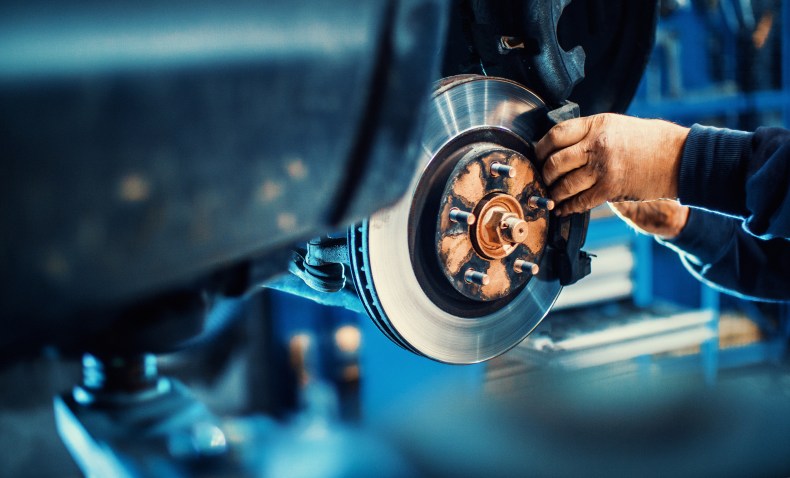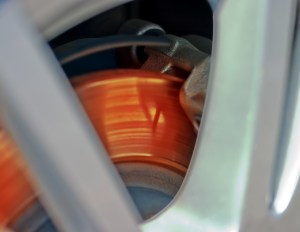What’s the Difference Between DOT 3 and DOT 4 Brake Fluid?
The primary difference between Dot 3 and Dot 4 is their respective boiling points.
I suspect I know your next question.
But first, some background. The U.S. Department of Transportation classifies brake fluid into four main categories:
- DOT 3
- DOT 4
- DOT 5
- DOT 5.1
Their primary differences are their wet & dry boiling points and their composition.
DOT 3 is the most common type used in cars and trucks today. DOT 4, however, is gaining popularity due to widespread use of anti-lock braking systems and traction control, which benefit from DOT 4 fluid’s lower viscosity.
DOT 4 is compatible with DOT 3, but features a higher boiling point. DOT 5 is silicone, meaning it doesn’t absorb water. It’s not compatible with the other brake fluids and is used mostly in classic cars that remain in storage for long periods and need a brake fluid that doesn’t absorb water. DOT 5.1, meanwhile, is used in high-performance and heavy-duty applications due to its high boiling point.
Bring it to a boiling point
So now we’re back to boiling point. What does it mean? After all, we’re not cooking this stuff.
Well, in the right operating and ambient conditions, you are cooking it.
Braking generates intense heat between the brake pads and rotors. Maybe you’ve seen a race on TV where the producers stick a GoPro under the car to show the brakes literally glowing red when the driver depresses the pedal. The intense heat can vaporize the brake fluid, causing it to become compressible, which leads to a spongy feeling when you apply the brakes.
Braking also places the fluid under intense pressure, potentially causing the fluid to boil. That leaves gas in the lines, which is compressible, leading to a soft pedal. In racing and performance-driving circles, this is known as brake fade, and it’s something drivers actively want to avoid. To drive as effectively and safely as possible, the driver must be confident that the brakes will perform on lap 10 as they did on lap one.
Brake fade can also come from the brake pad/rotor interface. The pads release gasses as well, which reduces contact between the pads and rotors. That’s why high-end rotors are slotted and drilled – to release gasses quicker, limiting fade.
Brake fade isn’t just for racers
Brake fade can affect nearly anyone. Descending a steep hill, especially when hauling a heavy load or towing a trailer, can generate tremendous heat if you ride or pump the brakes.
PRO TIP: Next time, downshift into a lower gear before descending a steep incline.
By the time you reach the bottom, your pedal may go nearly to the floor, making your heart rate go nearly through the roof.
If you like to toss your vehicle around a curvy country road for a little therapy, standing on the brakes going into corners can create sufficient heat to cause brake fade, too. If you get a little too zealous, you may end up going right through a corner and into the woods.
The fluid’s boiling point indicates the temperature at which the brake fluid vaporizes. The higher the DOT classification, the higher the boiling point, thus the better the fluid is at resisting heat. That’s why racers use DOT 4, not DOT 3, brake fluid.
Boiling point is separated into dry & wet boiling points
The dry boiling point is determined using fresh fluid straight from a new container. The fluid’s wet boiling point is determined using fluid that’s been contaminated with 3.7 percent water, thus it’s always lower than the dry boiling point. Why would test administrators contaminate good fluid? Because it’s a reflection of what happens in the real world.
Brake fluid is hygroscopic, meaning it absorbs water (except silicone-based DOT 5 brake fluid). DOT 3 fluid, for example, can absorb up to two percent water every year. Moisture can enter the system when you remove the reservoir cap to add fluid, through worn seals and even through the rubber brake lines themselves. Thus the fluid’s wet boiling point is the number that more accurately represents what’s really going on in your vehicle.
Which makes it important to periodically flush the brake system and replace the fluid to remove moisture. Otherwise, not only will your brakes become spongy and unsafe, the moisture will slowly corrode metal components.
A good rule of thumb is to change the brake fluid every other year in passenger vehicles, and at least every year in racing vehicles. The AAA says 88 percent of motorists overlook brake maintenance, so you’re not alone if you haven’t changed brake fluid in awhile, like since you bought your vehicle.
It’s not too late to start, though. And when you do, check out our line of brake fluids for your vehicle. The easiest way to determine the correct brake fluid for you vehicle is to use our Product Guide.
Find AMSOIL Brake Fluid for my Vehicle
Sioux Falls Webmaster note: AMSOIL’s Dot 4 outperforms it’s new 5.1 because the 4 is designed purely as a racing brake fluid where as the 5.1 id the latest for all uses yet still beyond the minimum standard.



